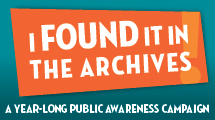
An exhibit featuring political protest art from the Thomas W. Benson Collection, will be on display from Nov. 18 to Feb. 1, 2012, in the Diversity Studies Room, 203 Pattee Library. The collection captures the intensely political climate and emerging student engagement with war, patriotism and anti-imperialism in the late 1960s and early 1970s. The exhibit is open during standard library hours. Call 814-865-3063 to confirm times.
Benson will give a gallery talk at 4 p.m. on Tuesday, Nov. 29, in the Foster Auditorium, 102 Paterno Library and also on MediaSite Live at www.libraries.psu.edu/mtss. No login required.
The Benson Political Protest Poster Collection began in August 1969, when Thomas W. Benson on sabbatical from Penn State arrived as visiting professor to spend the year in the Department of Rhetoric at the University of California, Berkeley. Political activity on campus was common though a fairly quiet presence, but the climate on the Berkeley campus changed dramatically in 1969 when the public learned of the 1968 My Lai Massacre, a murder of more than 350 innocent victims by U.S. troops. This massacre, combined with then Governor Ronald Reagan’s anti-University campaign and fiscal cuts, along with President Nixon’s April 1970 Cambodian invasion, fueled emotional demonstrations and strikes by faculty and students.
Benson noted, “The university became a sort of teach-in about the war.” Student design artists and activists banded together and created the Berkeley Political Poster Workshop that designed, printed, and distributed hundreds of political protest posters in support of the anti-war movement.
The Eberly Family Special Collections Library acquired the political protest posters in 2009 as a gift from Benson, the Edwin Erle Sparks Professor of Rhetoric, Communication Arts and Sciences, Penn State College of the Liberal Arts, and the editor of the series in Rhetoric and Communication for the University of South Carolina Press.
To view the full online Thomas W. Benson Political Protest Digital Collection, go to http://www.libraries.psu.edu/psul/digital/benson.html online.
To access the original Berkeley protest poster prints within the Thomas W. Benson Political Protest Collection, contact Historical Collections and Labor Archives, The Special Collections Library, 104 Paterno Library, Penn State University Park. For more information, or if you anticipate needing accommodations or have questions about the physical access provided, contact James Quigel at 814-865-1793.











































